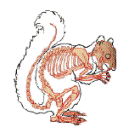
Harry Belafonte in Odds Against Tomorrow (dir. Robert Wise, 1959).
I watched this on videotape, so I had to steal the image above off the web; the image I wanted to show is the first shot of the bitter veteran Earl Slater (Robert Ryan) walking down the city street, heading straight into the camera, his body strangely overlit so that he looks totally ... white. In the next five minutes, he interacts gently but condescendingly with a little black girl who bumps into him on the sidewalk, he is nearly abusive toward a facially discolored (burn? birthmark?) hotel clerk who fails to notice him standing at the desk waiting for service, and he coldly rebuffs the black elevator operator who tries to engage him in pleasant small talk. Later in the film, his racism emerges full force: "You didn't say nothing about the third man being a nigger," he snarls to ex-cop Dave Burke (Ed Begley), who is tring to organize a bank heist with Slater and jazz musician Johnny Ingram (Harry Belafonte). At no point does the film try to ameliorate or explain Slater's bigotry, nor do we get any moments of transcendence. The black/white tension is merely one facet of the enormous chip on his shoulder, which in other contexts tends to increase rather than diminish our sympathy for him. Or maybe it is more accurate to say that when he does lose our sympathy, we feel it almost as a personal loss, as a breech of his humanity that implicates us somehow. When his long-suffering but adoring wife Lorry (Shelley Winters) is out working for the evening, he seduces his neighbor Helen (Gloria Grahame)--who is also his wife's friend. The leer on his face as he charms her menacingly into his arms is more spite than lust. He wants to rub dirt in his wife's regard for him, as her monetary support represents to him his own failure. Shortly before the climactic heist, while he is waiting alone on the outskirts of a small upstate New York town, a rabbit hops into his line of sight. He raises his rifle, prepares to shoot, and is momentarily caught up short by the creature's soft vulnerability. He relaxes his aim, prepared to let go of his violent instincts, when suddenly the rabbit startles and runs. Ryan erupts again into predatory rage, firing wildly in the rabbit's general direction. Its very will to live angers him.
Belafonte's Ingram is, by contrast, cool and collected, though he is skating on thin ice with a local mobster, to whom he owes $7500 in gambling debts. In a pit of fear and desperation, he gets drunk and stinks up a duet with blueswoman Mae Barnes, letting his part in the call-and-response refrain of "All Men Are Evil" grow into a strangled solo that drowns out the rest of the song. In what may be an unconsciously racist lapse in the metaphoric logic of the film, he is presented as a black man who ("ironically"?) can't deal with the "jungle" out on the street. On an outing with his little girl, periodically hounded by mob goons, he leans nervously against a phone booth as the noise of the animals rumbles in the background. Like Slater, he has a broken domestic situation that we sense could be unbroken easily with a little attitude adjustment. He still loves his ex-wife Ruth (Kim Hamilton), and she loves him, but his gambling and risky lifestyle has put a wedge between them. And, also like Slater, he has a chip on his shoulder: he resents the middle-class world of integrated PTA meetings and afternoon socials into which Ruth and his child have been accepted.
The two characters never have a meeting of the minds; their mutualities never reflect upon one another in ways perceptible to them except as confrontational outbursts. Neither one learns anything about himself through the other. And yet, by the end, they essentially comprise each other's world. They crash together like atoms in a reactor.
Wise's direction can be showy and symbolistic at times, but it is always moving. The jazz score by John Lewis is cool and tough, as is the screenplay, partly penned by blacklisted writer Abraham Polonsky (fronted by John O. Killens).



No comments:
Post a Comment